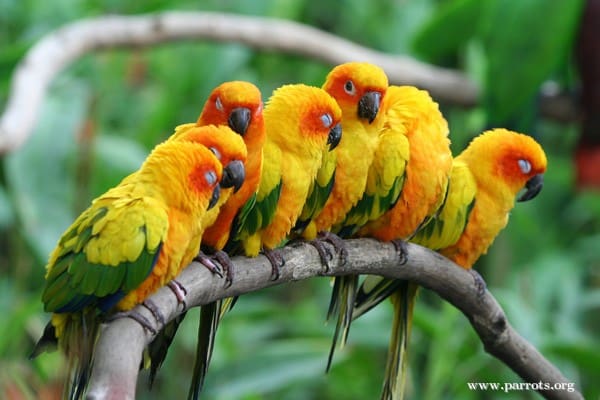The Sun Conure (Aratinga solstitialis) was uplisted on the IUCN Red List from Least Concern to Endangered due to a very rapid population reduction occurring in the last three decades.
In 2009, the World Parrot Trust recognised this urgency and funded biologist Toa Kyle’s census of the wild population. A survey was begun by WPT’s Dr. Jamie Gilardi in May of 2008 and continued by Kyle in southern Guyana a year later. He found that one population, in the Karasabai region of Brazil, is growing in numbers. Overall, however, the study concluded that the general population has declined significantly and is in urgent need of protection.
The WPT worked to encourage the protection and recovery of this species. It was also recommended that the species be listed on CITES Appendix I. Work to prevent cross-border trade quickly and protect the species’ preferred habitat was suggested, as well as conducting surveys to locate important additional populations.
Status: IUCN Endangered / CITES Appendix II
Population: 1000-2499 mature individuals, decreasing.
Threats: As a consequence of very high trapping pressure, the population declined drastically to local extinctions and is now scarce within its range. In Brazil, the rate of decline has been 50-79% over the last three generations. Guyana population is beginning to recover.
Range: Restricted to C Guyana and Roroaima, far NE Brazil; also recorded in NW Surinam and SE Venezuela.
Natural history: The birds feed on fruit, berries, nuts, buds and flowers; also legume pods, red cacti fruits and Malpighia berries in groups of up to 30 where food is abundant.

